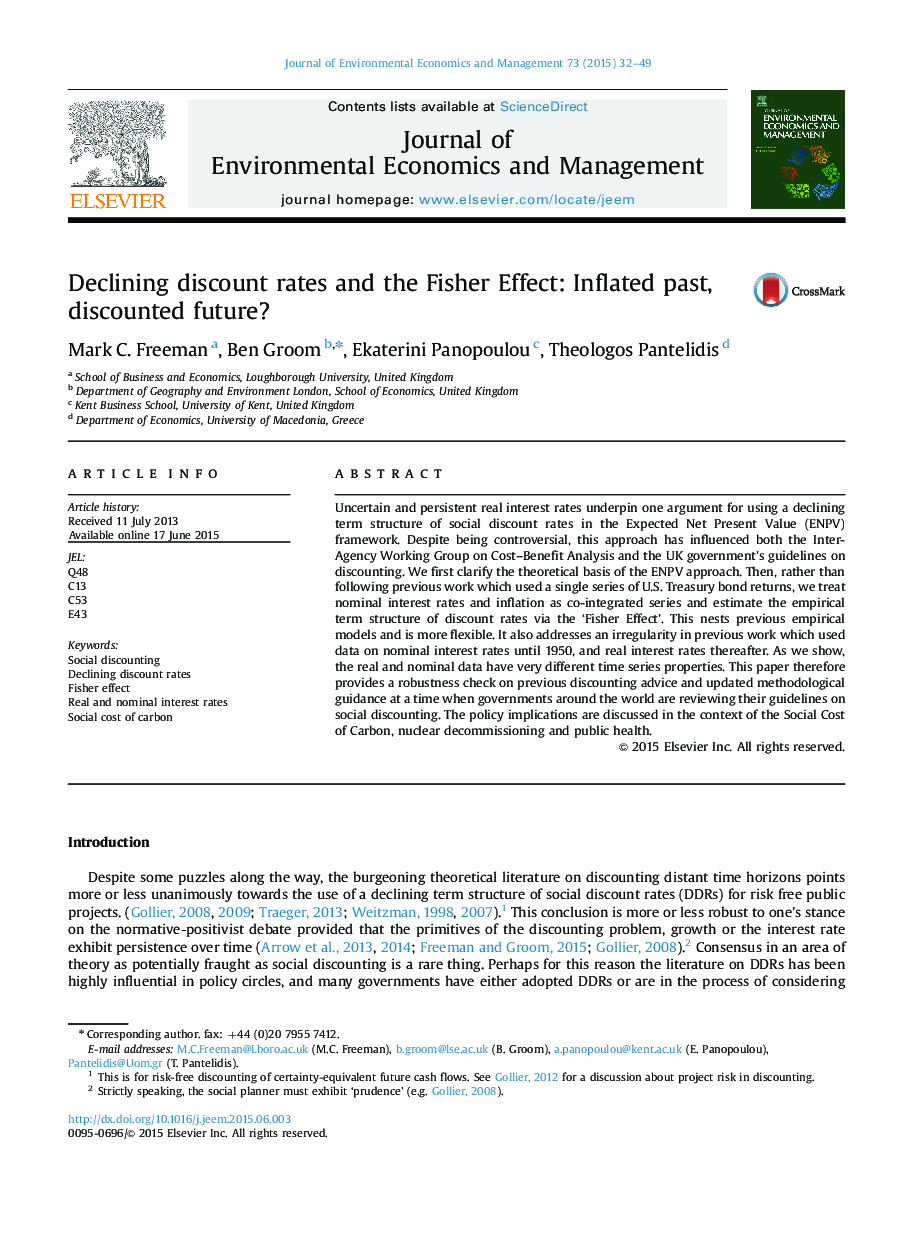| Article ID | Journal | Published Year | Pages | File Type |
|---|---|---|---|---|
| 959192 | Journal of Environmental Economics and Management | 2015 | 18 Pages |
•Declining discount rates are used by many governments and influence US guidelines;•Empirical methods use US nominal interest rates before 1950 and real rates after;•We split real interest rates into nominal rates and inflation to estimate the ‘Fisher Effect’;•This nests previous work and captures uncertainty in nominal interest rates and inflation;•The estimated term structure increases the Social Cost of Carbon by 100%.
Uncertain and persistent real interest rates underpin one argument for using a declining term structure of social discount rates in the Expected Net Present Value (ENPV) framework. Despite being controversial, this approach has influenced both the Inter-Agency Working Group on Cost–Benefit Analysis and the UK government׳s guidelines on discounting. We first clarify the theoretical basis of the ENPV approach. Then, rather than following previous work which used a single series of U.S. Treasury bond returns, we treat nominal interest rates and inflation as co-integrated series and estimate the empirical term structure of discount rates via the ‘Fisher Effect’. This nests previous empirical models and is more flexible. It also addresses an irregularity in previous work which used data on nominal interest rates until 1950, and real interest rates thereafter. As we show, the real and nominal data have very different time series properties. This paper therefore provides a robustness check on previous discounting advice and updated methodological guidance at a time when governments around the world are reviewing their guidelines on social discounting. The policy implications are discussed in the context of the Social Cost of Carbon, nuclear decommissioning and public health.
